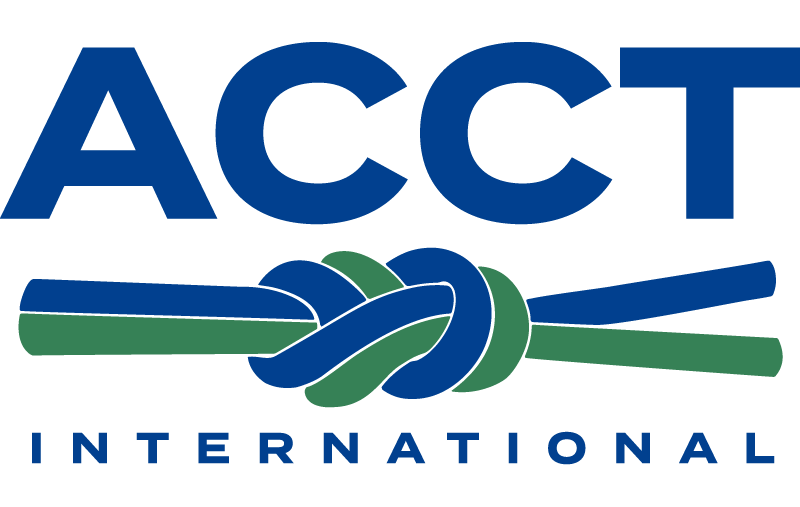Making Smart Equipment Choices: Replacing Gear for Participant Use
Every year, we all have a list of equipment that needs to be replaced. While I was at the ACCT conference, I saw some cool products that I wanted to use for our course, especially one that had a stopping mechanism so the participants didn't roll backwards down the zip line. I quickly realized after emailing ACCT questions that the goal isn’t just to find something new to replace what I have, it’s to ensure every part of our system continues to work together exactly as it was designed. In our field, even a small change can have a big impact on safety, performance, or rescue procedures. ACCT helped break down some of the equipment standards and lay out a clear framework to help guide us with equipment decisions. If you’re managing operations and looking to replace participant gear, here are some things to consider .
I was under the impression that I could use the ACCT standards for all equipment, including that used by participants and our staff. This was incorrect. The equipment standards (Chapter 1, Section I) apply to life safety system equipment used by participants on your course. (Staff gear falls under worker safety standards in your country, state, or province — not ACCT.) When reviewing or replacing gear, we were instructed to ensure that participant gear is separated from staff gear. The two are often very different in purpose and design, and should be held to the appropriate standard.
What Does It Say? I.2.1. Understanding and interpreting the standard (Systems Approach): Courses may use equipment assembled into systems of components (hereinafter referred to as ‘systems’) to achieve a variety of purposes. As such, systems may include belay systems, rope rigging, personal safety systems, and fall arrest systems. Unless specific editions of other standards are referenced, the current edition shall be used.
How We Were Told To Make It Work: Equipment is often part of a larger system, including belay systems, personal safety systems, and fall arrest systems, and it needs to be considered in that full system context.
-
Look at the Whole System: Whether it’s harnesses, carabiners, lanyards, or pulleys, they’re all part of a system that works together. Swapping out one part can impact the performance of the whole thing.
-
Stay Current: Don’t assume last year’s standard is still the right one. We check that we’re using the most recent editions of all applicable safety standards. ACCT told us they do reference other standards in their standards, and just because their standards may not reflect an update in EN standards, doesn’t mean something hasn’t changed.
What Does It Say? I.3.1.1. Design Considerations: When creating equipment systems, the qualified person shall consider the actual loads at various locations in these systems as well as conditions that may reduce the strength of components or adversely impact their performance.
How We Were Told To Make It Work: Before replacing equipment, you must consult with the designer and/or manufacturer of your course. They know what gear was chosen, why it was chosen, and how everything was originally designed to work together. Your manufacturer tested these systems during installation. Even something like a slightly longer lanyard or different pulley can affect safety, braking, or the participant experience.
-
Talk to the Experts: We were told to reach out to the manufacturer before making any changes, even something that seemed small. They know how each part was selected to match the forces and design of our specific course.
-
Resist the Temptation to DIY: Swapping out gear without consulting the designer can reduce the system’s strength or create unexpected problems during rescue scenarios.
-
Stick with What’s Proven: If we’re replacing something, we replace it with exactly what was specified — or we work with the manufacturer to update it safely.
-
Other Considerations: We were told that sometimes what is implemented in our course might have been put in place due to jurisdictional requirements. Just because something might meet a referenced standard in the ACCT standards does not mean that the referenced standard meets every jurisdictional requirement.
What Does It Say? I.3.1.4. Guidelines for Use of Equipment: A qualified person shall specify equipment components and systems and shall document limitations of use if different from original equipment manufacturer's guidelines
How We Were Told To Make It Work: We were told that sometimes our manufacturer will recommend alternative equipment due to recalls, updated gear, or changes in industry standards. Always follow their guidance rather than making choices based on what seems cooler or more exciting.
-
Follow Qualified Guidance: Whether it’s due to a recall or a new industry practice, we only make gear changes based on recommendations or after conversations with our vendors or course designer.
-
Don’t Be Lured by the Marketing: We avoid swapping gear just because something new promises a better experience. If it changes how the system functions, it could put participants and our operation at risk. Always do your research first, and then make a purchase second.
Replacing participant equipment isn’t just a purchase; it’s a system-level decision. Staying aligned with ACCT standards and working closely with your manufacturer ensures that every piece of gear continues to serve its purpose: keeping participants safe and delivering the experience your course was designed to offer.
